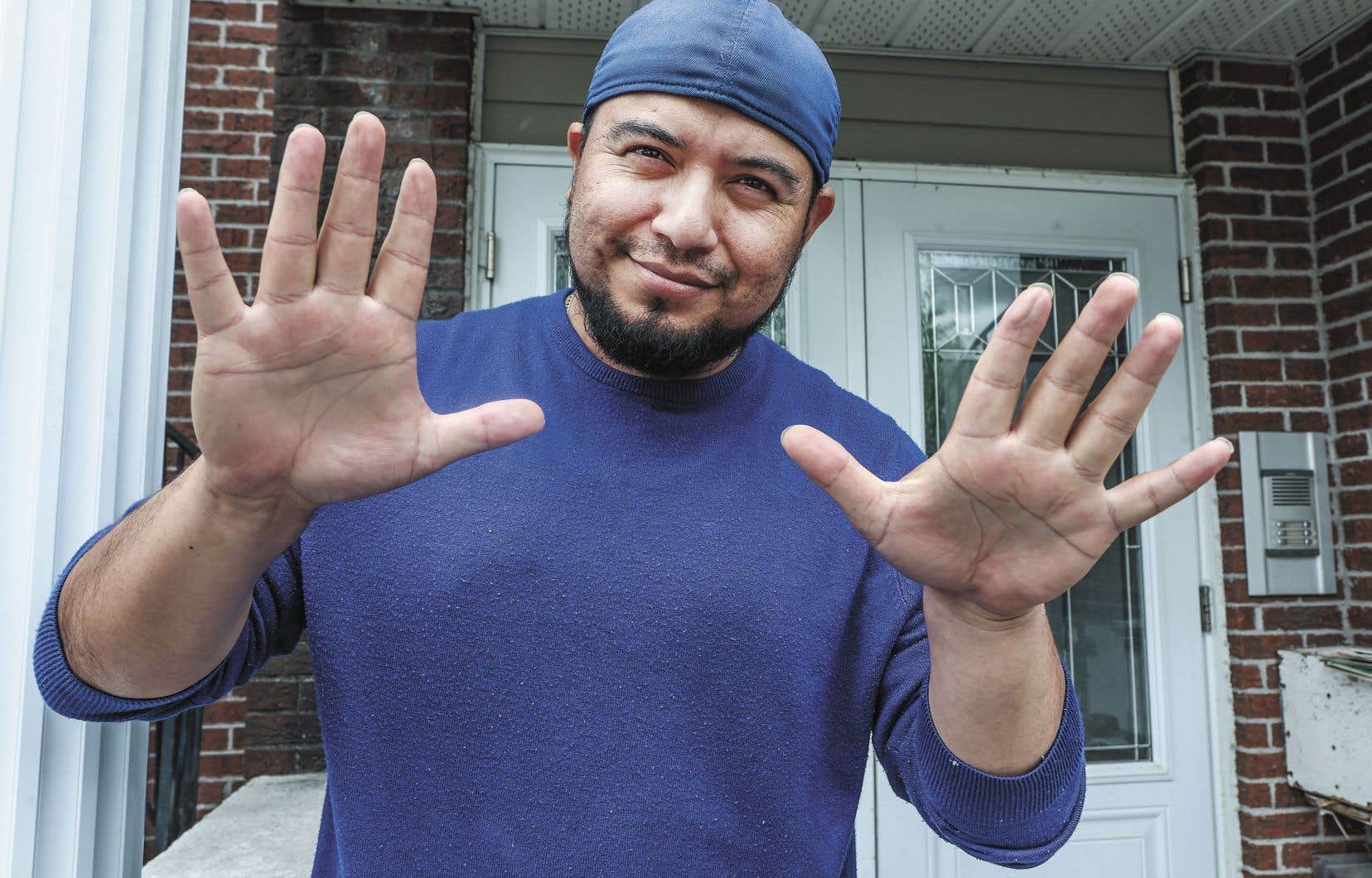The number of foreign workers has increased sharply in recent years in Quebec and more and more of them are suffering injuries, at work or not. Even if many obtain the care to which they are entitled, their temporary foreign worker status poses significant limits. How to combine an accident or an illness with such a status? What to do when the body does not heal in time for the visa to expire? Today: Rudy Samayoa’s file is still not closed more than two years after his recognition by the CNESST.
He aged a little, or a little faster. He cleaned his apartment, replaced the boxes blocking the skylight that turns the 1 1/2 into an oven when it’s sunny and took out his suitcase of papers on his bed. It is this pile of files which has continued to grow and which weighs on him, even if Rudy Samayoa has had his “small victories”.
A temporary foreign worker for 12 years in Quebec, his last contract for Les Viandes Lacroix was not renewed in 2021. The man of Guatemalan origin had just declared occupational injuries, recognized by the Standards, Equity Commission , occupational health and safety (CNESST).
When The duty met him for the first time, in 2021, this temporary foreign worker was “on the edge of the door”, as he says today. The second surgery — this time on the left hand — to treat his overuse injuries, called tenosynovitis, was long overdue. His work permit was about to expire. He had seen all his colleagues sign their contract renewals, but not him. The CNESST was ready to close the file.
“I could already see myself leaving and never being able to come back. Who was going to give me a contract with broken hands? “says today the father of the family.
Two years later, he obtained treatment, but his former employer is now contesting the decisions of the CNESST, which recognizes that the worker was injured in the course of his work. Between the Administrative Labor Tribunal (TAT), the medical counter-expertise and an asylum application, Mr. Samayoa has the impression of treading water.
“I am not bitter towards the company as such. What touches me more is to think about the people I know personally in the company who continue to fight against me,” he says today.
“Everything is taken to court and it is the workers who pay the price. Some give up their rights because they simply don’t have the means,” says Michel Pilon, coordinator of the Network for Migrant Agricultural Workers in Quebec. He represented Mr. Samayoa before the TAT and already, in 2021, he was indignant that he could be sent back to Guatemala without treatment and without a contract.
“I don’t know how I could have done all these steps on my own. I can’t even imagine if I had left [dans mon pays d’origine] “, recognizes the temporary foreign worker.
Disputes
Les Viandes Lacroix first argued that the claim had been made after the six-month period generally imposed. However, the court not only agreed with Mr. Samayoa, but described the way in which things happened as an “intrusive medical evaluation procedure”. He certainly had the right to consult a doctor, but he was “subjected by the employer to medical examinations with the accompaniment of one of his attendants”.
The person who accompanies him and translates the exchanges tells him “that he should not talk to the doctor about his work”, notes the decision of the TAT. This procedure may have “worried the workers”. The 30-year-old spends his working days degreasing frozen pieces of pork or beef using a device similar to a rotary razor. It is a very repetitive and fast movement. The tenosynovitis from which he suffers are moreover under a presumption of occupational disease in the law.
The judge then describes “a suspicious proximity” between the employer and the doctor, while the latter sends him directly information of a confidential nature.
The TAT has rejected challenges from the same company on six other occasions since 2017, most often to confirm CNESST decisions on workers’ claims.
It now remains to hear the merits of the dispute. Rudy Samayoa lent himself to the medical counter-expertise. “They gave us an appointment in Quebec, so I couldn’t have made it on my own,” he observes.
“This is the fourth doctor I’ve seen inspecting my hands,” he adds. So far, it has been assessed that he has permanent scars preventing him from resuming similar work on a production line. But we must finish deciding on the exact percentage of these losses, a cold calculation which determines the amount of compensation to be paid.
At the end of 2021, he also applied for asylum, after seeing his wife being extorted in Barbarena, in the Santa Rosa region of Guatemala. This department neighboring the capital is known for the insecurity created by criminal gangs, to the point that the deputy of the region has just requested reinforcements from the central government.
This asylum application has suspended for the moment the issue of migratory status during the procedures and the rehabilitation. Ottawa had denied him an open vulnerable worker permit and as other cases have shown, there is no specific immigration pathway for ill or injured temporary workers. But there is no guarantee that he will be recognized as a person to be protected by Canada.
“Would I do the whole course again if I had to do it again? Above all, I wanted to continue working there,” he laments.
Les Viandes Lacroix did not return numerous calls and emails from Duty.
